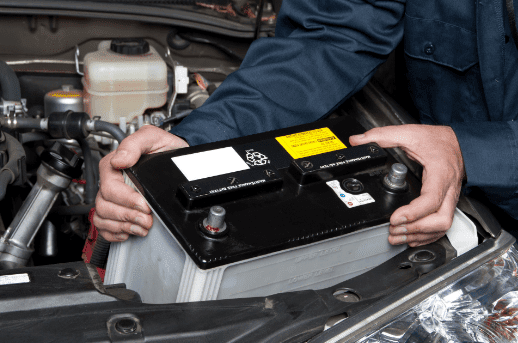How to install car battery safely
Installing car battery does look effortless to do. However, to install a car battery, there are proper procedures and sequences to avoid losses resulting from errors in installing car battery. An improper installing car battery can cause quite a few consequences, such as :
- An electric short circuit inside the Engine Control Unit (ECU) due to reverse battery terminal installation.
- The alternator fuse (charging fuse) is blown due to a short circuit because your wrench touches the other battery poles.
- The battery terminal is damaged and cannot be tightened.
- The battery is broken due to an electric short by terminals.
Therefore, we need to follow the order and how to install a car battery that is correct and safe. But beforehand we need to pay attention to the condition of the battery to be installed, for example:
- The size of the battery that is installed is appropriate.
- The position of the battery poles with the cable position in the car is suitable and fit.
- If the battery is wet-type, make sure the battery cap is fit and tight.
- Prepare the tools for installing car battery.
We need at least a 10 or 12 mm wrench key of the same size to ensure that the wrench can securely attach the nuts and bolts-head batteries.
Once the tools are ready; and the battery's condition and size are entirely checked and prepared to install, here are how to install car battery.
STEP 1: Insert the battery
Make sure the condition of the cables in the battery compartment in the engine room does not hinder the process of installing car battery. Move to the surrounding side so as not to be pinched by the car battery body.
Once safe, lift the car battery in the correct position (not reversed) and keep the battery position up so that the battery water inside is not spilt.
Put the car battery in the correct position where the car's positive and negative cables are not interchanged, making it difficult to install.
STEP 2: Install the battery bracket and holder
Install the car battery fixing bracket on both sides of the car battery. There is usually a place to attach the fastening shaft to the car body in the battery holder. Install the bracket first and then tighten it sufficiently. Use a wrench that fits the nut on the fastener.
STEP 3: Attach the positive cable (red colour)
Attach the plus (positive) cable to the positive terminal of the car battery. The positive cable on these cars is usually marked in red either on the cable or rubber cap.
Pay attention to the position of the cable terminal head that is attached to the car battery terminal. Make sure the position is in and covered by the cover.
After inserting and fitting, tighten it with a 10mm wrench. Make sure the cable terminal is firmly attached and not loose on the battery head.
Avoid installing car battery cables by hitting the battery terminals so they can enter the poles of the battery. That can cause damage to elements in the battery that are close to the positive pole.
Also, installing the positive cable will avoid electric short due to the spanner being used to touch the fastening bracket and the car body.
Also read:- How to disconnect a car battery?
- How to clean battery corrosion
- How long does it take to charge a car battery?
STEP 4: Attach the negative cable
Attach the negative cable to the negative terminal of the battery. Install carefully, and don't hit the battery head to insert the battery cable terminal.
Use a 10mm wrench or according to size to secure the negative cable of the battery. Make sure the battery terminals are tight and not loose. Note the steps in the picture on how to install a car battery below.
STEP 5: Re-check the installation
The final step of installing car battery is to re-check the car battery installation condition again. Starting from the cables' condition around the battery (so that no wires are pinched) to the battery head terminal bolts' tightness. Make sure all the installed parts are fit and tight.
After the battery installation steps are complete, you can start to turn the car on and start the engine to ensure the battery installation is complete and installed safely.

